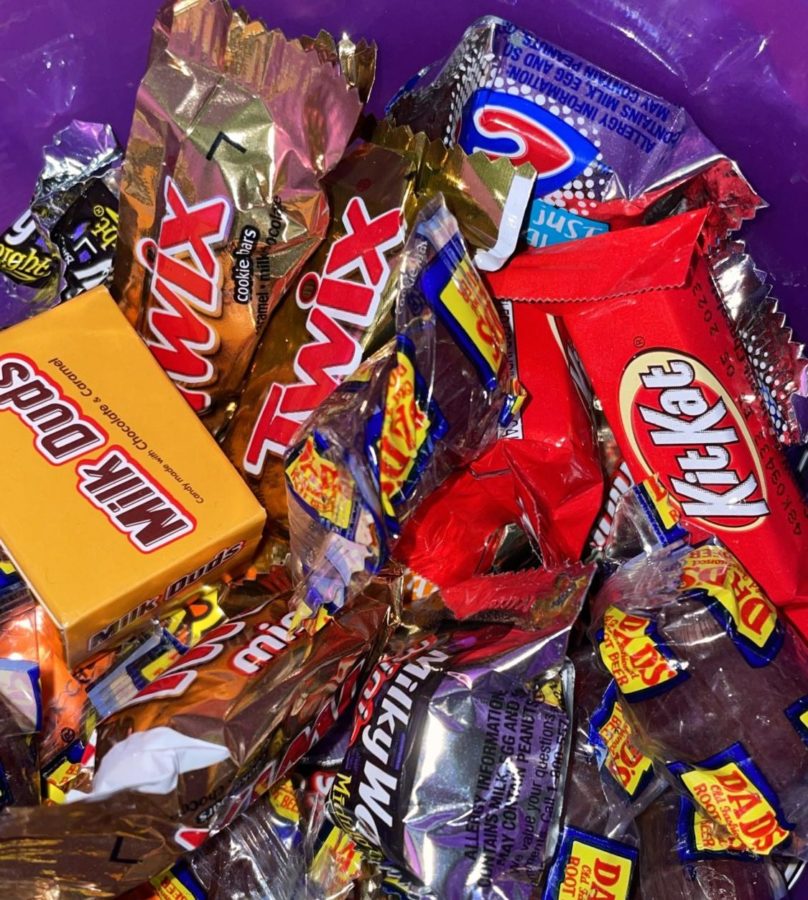Halloween’s Spookiest Scandals: Waste Generation and Cultural Appropriation
Candy wrappers, flimsy decorations, and tacky costumes are some of the many attributors to Halloween being one of the most environmentally harsh holidays of the year.
Spooky season is undeniably the best part of the year. The weather cools down, cinnamon- and pumpkin-spiced everything dominate seasonal menus, and I can adorn myself in all the black, skulls, spiders, and bats I desire.
While Halloween is my favorite holiday so much that I throw on my spider choker and tombstone earrings the second September transitions out, there are still some practices of the holiday I aspire to change.
Halloween squanders away heaping amounts of waste year after year, and some people use this celebration as a vehicle to generate offense toward marginalized communities.
Waste
According to Save Your Wardrobe, an estimated 7 million costumes are thrown away each year. To put into perspective, this equates to 83 million plastic bottles.
Halloween is one of the biggest holidays that attributes to and encourages fast fashion, which is the phenomenon of low-quality clothes being produced on mass levels corresponding to micro-trends. This means that typically the clothes are not valued and only created and purchased to match what is trendy, and are rarely worn after.
Since the clothes are made at a lower-quality, they last for way shorter time periods too. According to Earth.org, 92 million tons of textile waste is produced each year, meaning one garbage truck full of clothes ends up in a landfill every second.
It’s so easy to find clothes at the thrift store that can be a part of a costume but still worn outside of just one day a year. It’s also more fun and challenging to DIY a costume rather than store-bought. They have way more character and flare and reduce your carbon footprint too.
Textile waste is not the only waste that Halloween invokes. The plastics in fun-sized candy wrappers are unable to be recycled, and most Halloween party decorations are made of the same material.
It’s fairly simple to consider buying decorations that will be reused every year over thrown away.
Offensive Costumes
My second gripe with my favorite holiday is the way some people choose such insensitive costumes just for the sake of being fun or cute or trendy.
Some Halloween costume trends are simply outdated and need to reflect a more conscious society. Gender inequities are still wildly apparent in the same occupational costumes and show how often women are sexualized. What kind of firefighter wears a miniskirt and stilettos?
If you are choosing to wear a sexy costume for your own agency and empowerment, I am in full support of that. In contrast, having a hypersexualized stereotype thrust upon women immediately through the marketing of certain costumes is pathetically antiquated.
Beyond sexualized costumes, costuming as a different ethnicity is completely unacceptable and culturally appropriative. Other people’s cultures, most of the time cultures that are marginalized and oppressed, should not be free game to wear for a night for fun and entertainment.
While anti-Asian hate crimes increased 339% from 2020 to 2021 (found in a report from the Center for the Study of Hate and Extremism released in January 2022,) costumes including kimonos, cheongsams, rice hats, or hairstyles with chopsticks are beyond infuriating to witness.
There’s nothing entertaining about people suffering everyday in their own skin, while those who oppress them throw on their culture when it’s convenient and fun for them.
Leave the grass skirt and the sombrero on the shelves. The livelihood and wellbeing of other’s should take priority over a preposterous and ephemeral costume.
Despite my love for my favorite holiday, I refuse to turn a blind eye to the harm it still creates. Halloween can easily be celebrated in ways that tread lightly on our mother Earth, and respectfully to people’s social identities.
